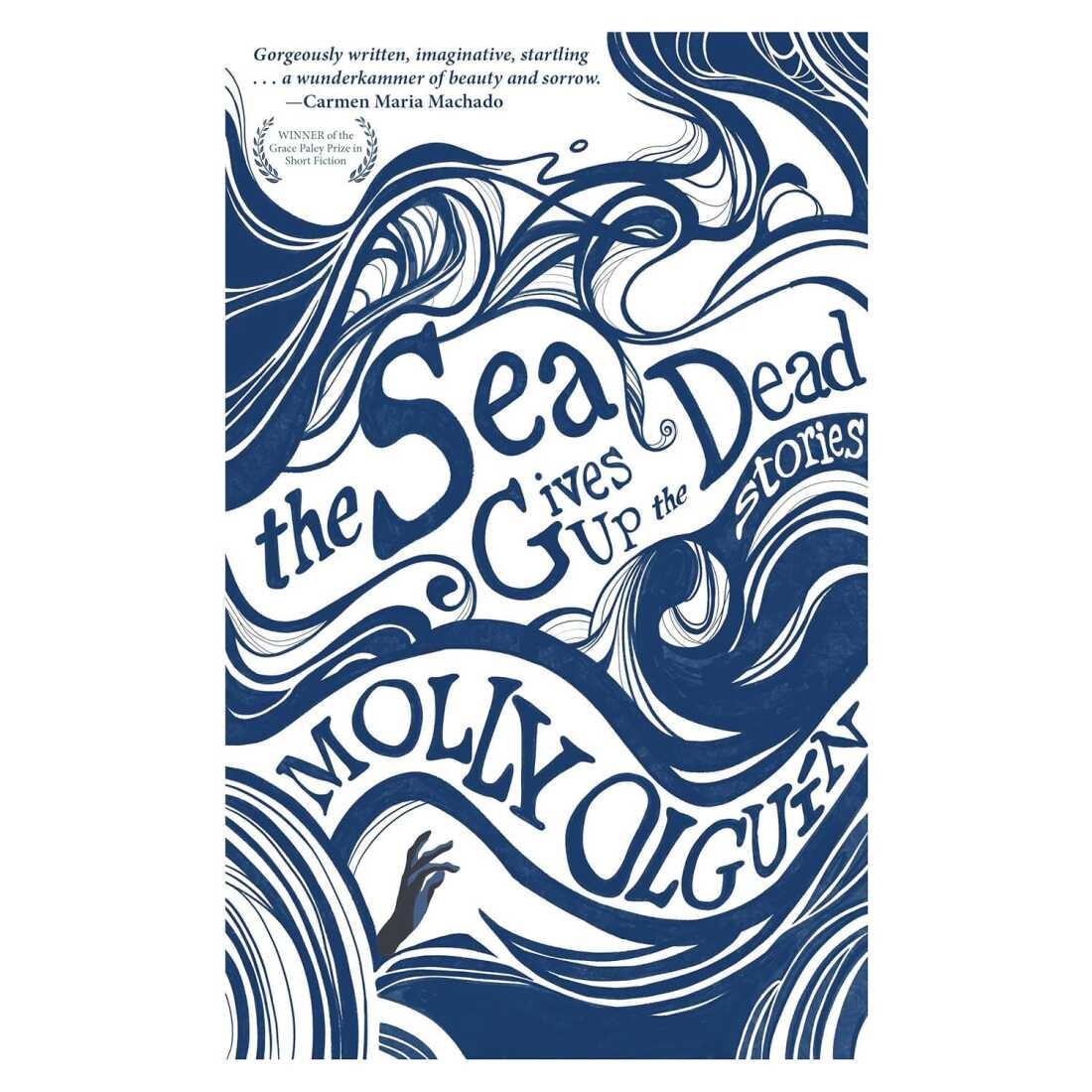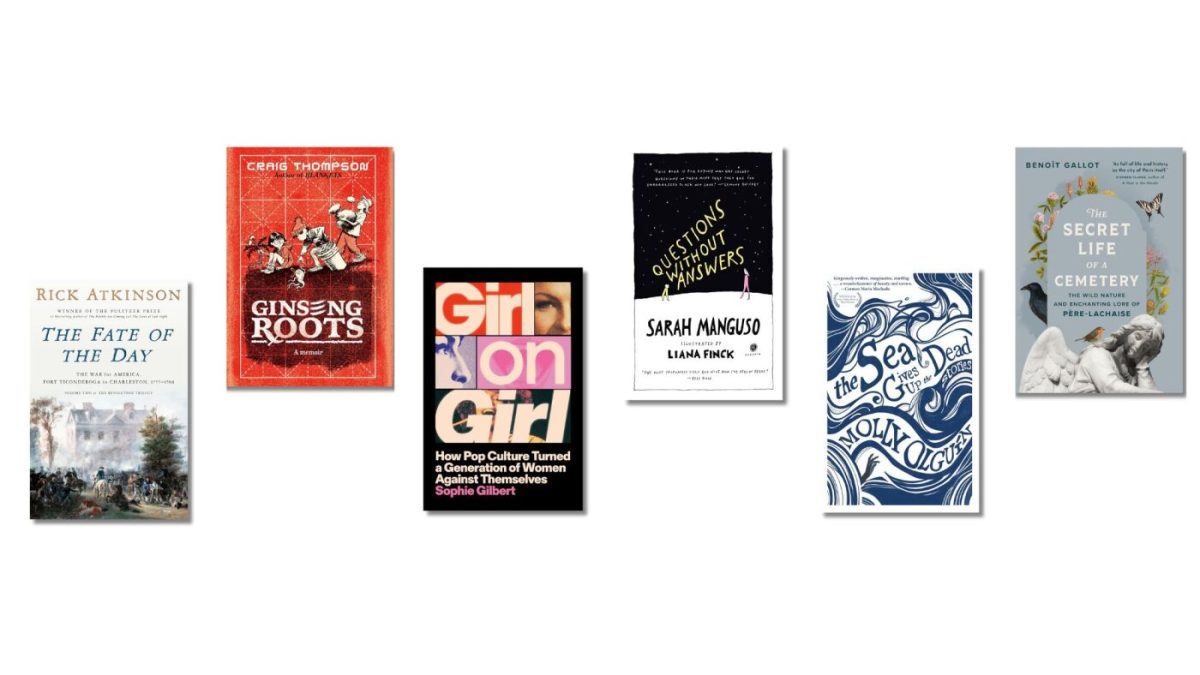
It must be something of a deflating time for Revolutionary War reenactors. The 250th anniversary of the war’s opening shots at Lexington came and went earlier this month. And while the date was certainly commemorated with gusto, there won’t be another major battle to reenact until June, at the earliest.
Fortunately there’s consolation on this week’s publishing calendar: The second volume in Pulitzer Prize-winning historian Rick Atkinson’s planned trilogy on the American Revolution. The Fate of the Day covers the war’s middle years, which were rife with the kinds of pivotal scenes — such as the Battles of Saratoga and the long winter at Valley Forge — that may tide over even the most impatient Revolution buffs among us.
But no sweat if tricorn hats aren’t really your thing. There’s plenty of great new writing to choose from this week, including a graphic memoir, short fiction and everything from our earliest questions about life to one particularly fascinating place for the dead.

The Fate of the Day: The War for America, Fort Ticonderoga to Charleston, 1777-1780, by Rick Atkinson
Atkinson’s mantel bears no fewer than three Pulitzer Prizes – for reporting, public service and history – but his planned trilogy on the American Revolution may well be his most ambitious undertaking yet. Nearly six years after the first installment, The British Are Coming, his next, Fate of the Day, continues the story of the bloody crucible that forged the United States. This time, Atkinson focuses on the tumultuous years that saw France’s formal entry into the war and the Continental Army’s fitful development into a worthy adversary for the world’s mightiest empire.

Ginseng Roots, by Craig Thompson
This book is a lot of different things at once. It’s a memoir of the summers Thompson spent as a kid working on ginseng farms in Wisconsin. A wide-angle history lesson on the global trade in the popular medicinal herb. A graphic novel, a travelogue, a coming-of-age tale — truly, Ginseng Roots wears many hats. But its most salient aspect may be Thompson himself, whose work has been described by NPR’s comics maven, Glen Weldon, as “mastery of the alchemical mixture of word and picture only possible on the comics page.” The Eisner Award-winner previously created the influential 2003 graphic memoir, Blankets, which earned widespread plaudits as well as a spot on the list of books no longer allowed in Utah public schools.

Girl on Girl: How Pop Culture Turned a Generation of Women Against Themselves, by Sophie Gilbert
Gilbert has earned a National Magazine Award and a spot on the Pulitzer Prize shortlist for her work as a critic with The Atlantic. In Girl on Girl, her first book-length work, Gilbert trains her gimlet eye on popular culture in the past 30 years and the ways that its pervasive images “calibrated to male desire” have reduced, distorted and ultimately undermined the promises of feminism.

Questions Without Answers, by Sarah Manguso, illustrated by Liana Finck
If you’ve talked with a young child for any length of time, here’s a scene you may find familiar: The kiddo is minutes-deep into some cutely semicoherent ramblings when they pause to ask you — apropos of nothing and almost in the same breath — about the nature of death. It’s not that kids say the darndest things; it’s just that they intermittently, and without warning, spring some of the most challenging questions you’ll encounter outside of a doctoral exam, or remote mountain top temple. Good on Manguso, then, for not only resisting the urge to flee but even collecting – in this illustrated compendium of delight and distress – some of the artfully impossible questions that kids have put to her and many other contributors.

The Sea Gives Up the Dead, by Molly Olguín
This debut short story collection bears echoes of Angela Carter and Shirley Jackson, with its dark, occasionally surreal fantasies that interweave elements of history, sci-fi and horror, fairy tales and advice columns. Dragons and mermaids, those picturebook stalwarts, make appearances in some of these stories but, then, so does a pervasive sense of dread and horror that’s rather less suited to the library storytime set. This slim volume contains multitudes, in other words.

The Secret Life of a Cemetery: The Wild Nature and Enchanting Lore of Père-Lachaise, by Benoît Gallot
Any introduction to Gallot’s life story likely begins with the epilogues of other, more famous lives. Oscar Wilde, Jim Morrison, Marcel Proust and Edith Piaf headline the imposing list of artists whose bodies now reside in the Parisian burial ground that Gallot has tended since 2018. In this newly translated memoir, Gallot reflects on what it’s like to live and work in Père-Lachaise, a city of the dead so alive with history, tourism and wildlife that it hardly seems accurate to call it a resting place at all.
